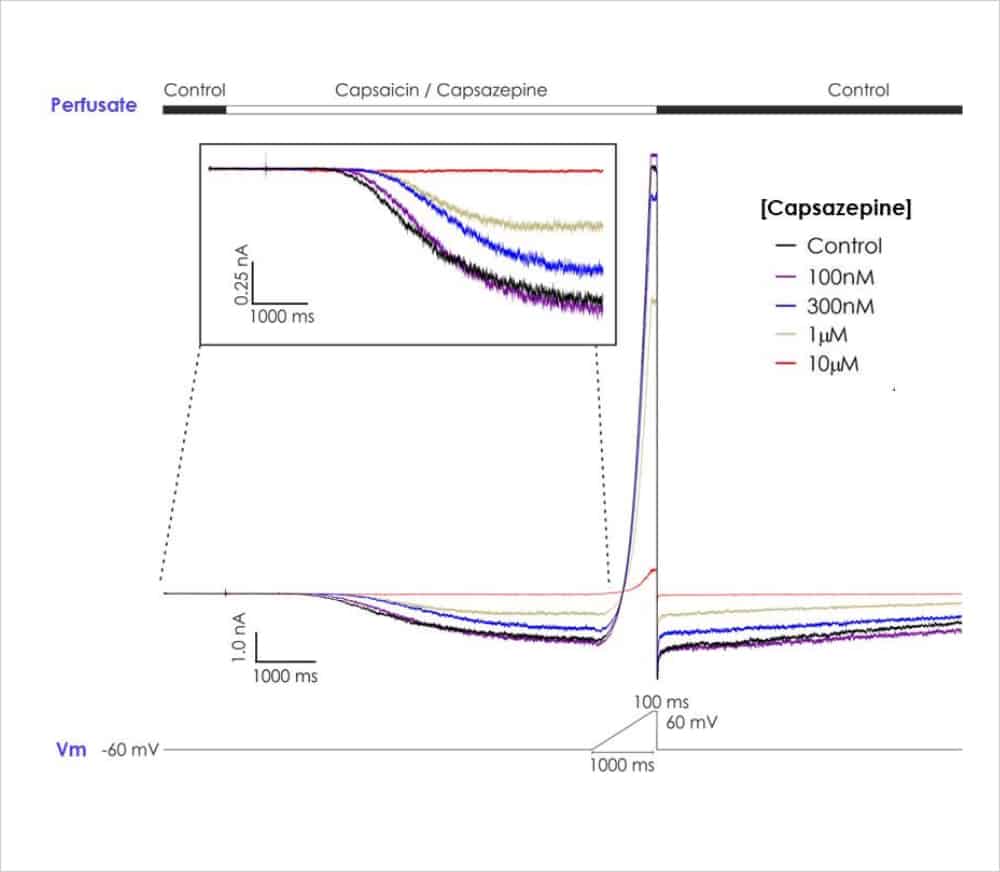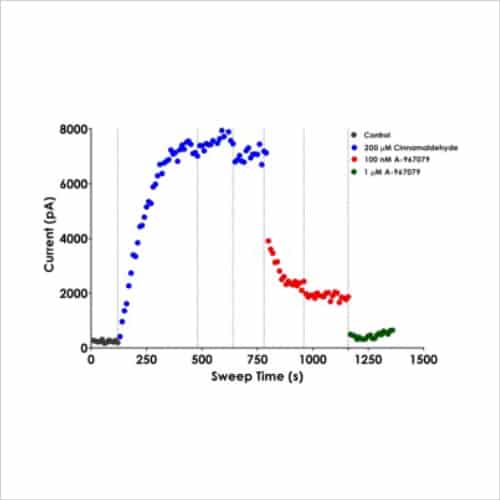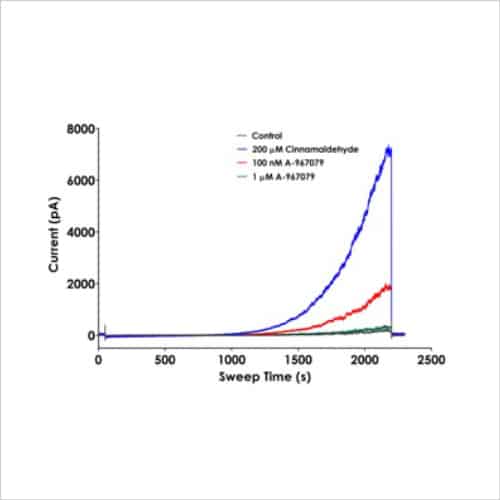The Transient Receptor Potential (TRP) gene family
An introduction to the Transient Receptor Potential (TRP) gene family
Transient receptor potential (TRP) channels are a family of ion channels distantly related to the voltage-gated superfamilies. TRP channels are expressed in a variety of organisms such as yeasts, worms, flies and mammals, including humans, where they play important cellular functions. Currently, 28 different TRP channels have been identified in mammals and they are grouped by sequence similarity into several subfamilies: TRPC (canonical), TRPM (melastatin), TRPV (vanilloid), TRPA (ankyrin), TRPML (mucolipin), and TRPP (polycystin).
Transient Receptor Potential (TRP) gene family
| Major groups | Members |
| TRPC | TRPC1 (TRPC1), TRPC2 (TRPC2), TRPC3 (TRPC3), TRPC4 (TRPC4), TRPC5 (TRPC5) TRPC6 (TRPC6), TRPC7 (TRPC7) |
| TRPV | TRPV1 (TRPV1), TRPV2 (TRPV2), TRPV3 (TRPV3), TRPV4 (TRPV4), TRPV5 (TRPV5), TRPV6 (TRPV6), |
| TRPA | TRPA1 (TRPA1) |
| TRPM | TRPM1 (TRPM1), TRPM2 (TRPM2), TRPM3 (TRPM3), TRPM4 (TRPM4), TRPM5 (TRPM5), TRPM6 (TRPM6), TRPM7 (TRPM7), TRPM8 (TRPM8) |
| TRPP | TRPP2 (PKD2), TRPP3 (PKD2L1), TRPP5 (PKD2L2) |
| TRPML | TRPML1 (MCOLN1), TRPML2 (MCOLN2), TRPML3 (MCOLN3) |
TRP channels are sensitive to common cell signalling, factors such as PIP2, Ca2+, cyclic nucleotides, phosphorylation, temperature, and osmotic pressure, as well as exogenous factors, such as environmental irritants (e.g. capsaicin, menthol and cinnamaldehyde). Activation of TRP channels leads to a plethora of signalling events, which includes membrane depolarisation through the influx of cations, activation of intracellular signalling pathways, initiation of endocytosis/exocytosis, etc. As a result of the diverse signalling events downstream of their activation, TRP channels have been reported to have important roles in many fundamental processes, which include fertilization, sensory transduction and cell survival. Accordingly, mutations in TRP channels have been linked to a wide range of different therapeutic indications, including neurodegenerative diseases, skeletal dysplasia, kidney disorders and familial pain syndromes.
TRP channels are expected to be composed of four subunits surrounding a centrally located ion permeation pore. Hydropathy analysis suggests that each subunit is composed of six transmembrane segments with the N and C termini being located intracellularly. The majority of TRP channels form homotetramers, but a large number are also able to form heterotetramers.
Metrion has developed compound screening assays for TRP channels, such as TRPV1 and TRPA1, on a variety of platforms, which includes plate based fluorescent readers, automated patch clamp (QPatch 48 and Patchliner) and manual patch clamp.
Metrion are highly experienced at developing custom TRP screening assays on patch-clamp platforms where short applications of activating ligand can be synchronised with different voltage commands. Figure 1 shows representative current traces from a manual patch-clamp four-point concentration response assay showing progressive inhibition by capsazepine. TRPV1 current was evoked with a 6 s application of capsaicin at the holding potential (-60 mV), before a 1 s ascending ramp to +60 mV was applied.

Metrion also has considerable experience of developing compound screening assays against TRP channels on automated electrophysiology platforms. Figure 2 shows representative TRPA1 currents elicited with 200 µM cinnamaldehyde and the effect of two concentrations of a positive control compound (A-967079).


Other recommended publications
Posters


Let’s work together
What are your specific ion channel and assay needs?
If you have any questions or would like to discuss your specific assay requirements, we will put you directly in touch with a member of our scientific team. Contact us today to discover more.
